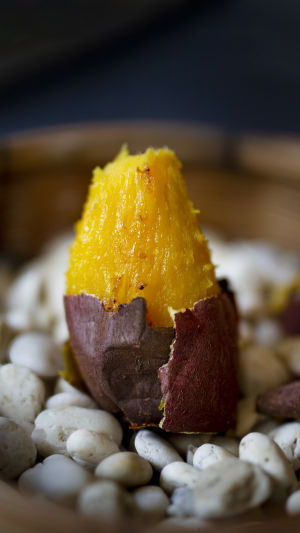Sweet potatoes are a common crop. They belong to the early-maturing potato plant family and are an important staple food for humans. Sweet potatoes have reddish, orange, or yellow skin and orange or yellow flesh. Their sweet taste and soft texture make them highly popular.
Sweet potatoes are packed with nutrients, including vitamin A, vitamin C, potassium, fiber, and antioxidants, all of which contribute to human health.
Sweet potatoes are incredibly versatile in cooking. They can be boiled, steamed, grilled, fried, or stewed. They are used in a variety of desserts, such as sweet potato pie, sweet potato cake, and sweet potato pudding.
They can also be incorporated into main dishes, like sweet potato mash, sweet potato fritters, or sweet potato chips.
Different regions cultivate various varieties of sweet potatoes for different purposes. Sweet potatoes are a primary crop in many countries and regions, including Asia, Africa, and America. They are also used as animal feed and industrial raw materials in some areas.
In Japan, sweet potatoes were introduced in the 17th century. In Japanese, sweet potatoes are called "satsuma imo" because they spread gradually from the Satsuma region in southern Japan (now part of southern Kyushu) to the rest of the country.
Sweet potatoes are widely grown in various regions of Japan. They can thrive even in poor or depleted soil, and they are highly nutritious.
During times of food shortages, sweet potatoes have consistently served as a valuable source of nutrients in Japan.
People in Japan create various delicacies using sweet potatoes, and both children and adults enjoy dishes made with sweet potatoes.
For instance, sweet potatoes can be battered and deep-fried to make tempura. They can also be steamed and sun-dried to produce "hoshi-imo" (dried sweet potatoes). Another sweet treat is "sweet potato sticks in syrup" (IMO-kepi), where the potatoes are fried and coated with syrup.
Sweet potatoes are also utilized to make imo-jochu, an alcoholic beverage produced by distilling the natural sugars found in sweet potatoes.
Since sweet potatoes are grown extensively throughout Japan, many kindergartens and elementary schools have a tradition of digging up sweet potatoes in the autumn.
This activity allows children to experience the joy of harvesting and learn about the growth of crops. Sweet potatoes hold a special place in the hearts of many Japanese people since childhood.
One delicious way to prepare sweet potatoes is by baking them with their skins on, creating "roasted sweet potatoes." Traditionally, the best method involved placing the sweet potatoes in the center of hot stones.
The far-infrared waves emitted by the stones slowly roast the sweet potatoes, increasing their sugar concentration and evaporating excess water, enhancing their natural sweetness.
In the past, the only way to enjoy these stone-baked sweet potatoes was to purchase them during the winter from food trucks equipped with ovens that sold them throughout the town, providing freshly baked sweet potatoes.
Street vendors would call out "Stone-baked-sweet potato!" ("ISHIYAAAKI-IMOOO" in Japanese) in a distinct tone, attracting many customers to their food trucks.
Nowadays, electric ovens capable of achieving a similar effect to stone baking are available, and baked sweet potatoes can be purchased in supermarkets all year round. This convenience makes it easier than ever to savor this delicacy.
Another popular snack is iced baked sweet potatoes. These sweet potatoes are baked and chilled in the fridge before being sold.
The chilling process results in a moist texture and enhanced sweetness, elevating the deliciousness to a new level. They are not only loved by the Japanese but also favored by people throughout Southeast Asia.
Additionally, the various carbohydrates present in sweet potatoes become softer and more easily absorbed by the body after chilling, offering health benefits such as preventing a rapid rise in blood sugar levels. It is no wonder that they are so highly sought after.





